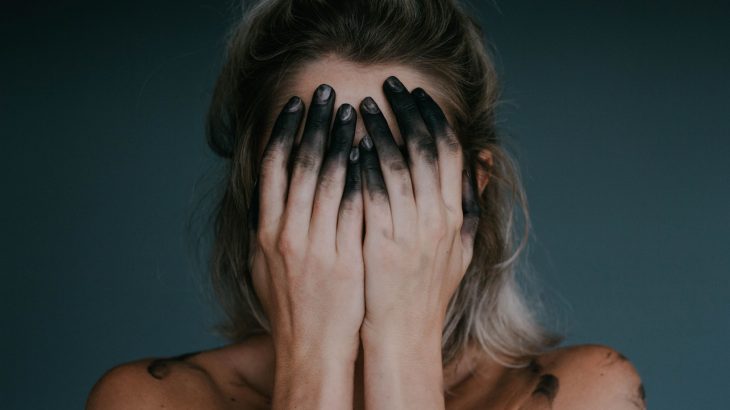How to Make a Book Trailer
By H.E. Roulo

A still shot from the book trailer for Plague Master 1, but you don’t need to be afraid–book trailers are fun!
I have had recent experience making two book trailers, so I’m not an expert, but I thought that other newcomers might benefit from the research I had to do and go straight to practical steps.
This isn’t the only way to do it. It probably isn’t the best way to do it. What I can tell you, is that it will get you a trailer at a minimal cost and might be fun along the way. If you have better ideas, do those—and tell me about them.
GETTING STARTED
I’m going to assume you have a book. A book trailer needs a book, because you need to know what that book is about in order and put it into a pleasing visual format. To get it into a visual format, you have essentially two choices. Either, you can find pictures related to your book and put them together as a slideshow with words or text and music, or you can record your own images and video related to the book.
FIND IMAGES
Since you didn’t create all your own images, you need rights-free images to associate with your book. For this, I recommend Unsplash.com. These professional looking images are searchable and may be used and modified as you like. I added an attribution section in my video’s notes, but even that isn’t required. There are other rights-free image sites online as well.
Enter search terms that come to mind with your book. Use general terms that are genre related and mood related, or more specific ideas such as words based around a character’s hair color. Add any images that might work into a Collection to review later. Keep going. This rabbit hole is deep, and its easy to fall into so you may want to set a timer for yourself. It’s fun to put your book into images. Frustrating, because nothing will be perfect, but still fun.
If there’s something you truly need, you may want to search iStock and purchase an image. I like them because their pricing is consistent and up front. Pictures in their Essential category cost $10.
MAKE YOUR OWN IMAGES
The second option, of creating your own visuals, is more personalized but requires more planning and effort. It is difficult to find actors, locations, and props. I think this is a wonderful option if you are up to it. You can still pad your own creations with rights-free images and videos, so you may want to read about the first option, or you can skip to the next section.
STORYBOARDING
Review your images and videos. Now you know what you have to work with. Start discarding the ones that don’t work and organizing them in a logical way. For me, I was working on trailers for a series and broke the images into files by which book they fit best with. Then, I was able to see the timeline of my story develop and quickly realized a few images of futuristic buildings could fill the gaps and give a sense of the mood and setting. After organizing the images, I wrote a sentence per image related to the progress of the book and ended with my cover.
RECORDING AUDIO or ADDING TEXT
To record audio, I highly recommend Audacity. It is reasonably intuitive and free. This is what many podcasters use. I like to record all the audio at once, then cut apart the lines to place with each image. This means the timing between the lines isn’t too important. Remember to record a few lines with the name of the book and author, and directions on where to go for more information.
Once you have the audio recorded in Audacity, simply highlight the audio of the sentence you want and select File|Export|Export Selected Audio. Give each line a name, such as PM_Line_1_v1.mp3 (for me, that’s Plague Master, line 1, the first version).
A voiceover can do wonders. I highly recommend this. However, if you aren’t able to record audio or to find someone who can, then place text over the images for people to read as they go along.
PUTTING IT TOGETHER
If you have a movie-making software you prefer, use that. I went with the absolute simplest solution for any Windows user and opened Video Editor. Here, I could bring in all my collected photos and organize them. Drag images to the timeline at the bottom. Select the duration for each (between 2 and 5 seconds). For some, I added a pan effect so it didn’t feel as static. Keep the trailer short. It’s just a trailer, after all, not your entire book.
There is an option to add Custom Audio. Use this to add the lines of audio you’ve recorded and selected.
Run the whole thing, watching to make sure it makes sense. For longer lines, you may span more than one image, or may need to change the duration of each image.
FINISHING TOUCHES
If the trailer has images and the blurb-errific lines explaining how great your book is, it’s time to add bed music. Again, make sure you have rights to whatever you select. I used free-stock-music.com to find moody music. I placed it over the length of the trailer, but soft enough not to cover the speech. I selected the fade in/fade out checkboxes.
USING THE BOOK TRAILER
The book trailer needs to be seen. Add it to YouTube, your blog, your FB page (or author page, if you have one), and your Amazon Author Center page. You can add it to Goodreads, but it will be associated with the author, not the specific book. Tip: when adding it in Goodreads, use the URL at the top of the screen and not the Youtube SHARE link. For example, instead of https://youtu.be/R1f_-v8MOsI use https://www.youtube.com/watch?v=R1f_-v8MOsI.
Here are my examples. By doing these, I’m getting more skilled for the next book. And the next…

